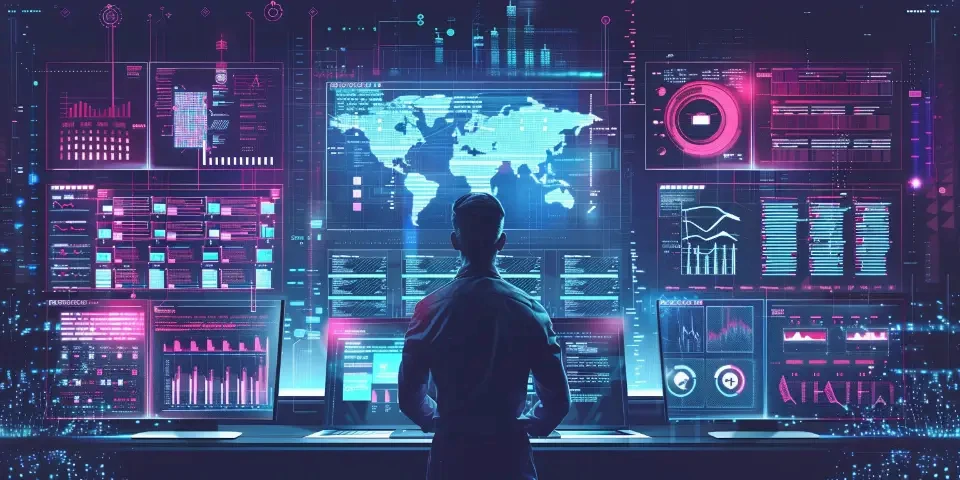Safety First 10 GIFs Demonstrating How AI Enhances Security and Prevents Crime
Artificial Intelligence (AI) has revolutionized various industries, and one significant area where its impact is profound is security and crime prevention. With its ability to analyze vast amounts of data in real-time, AI plays a crucial role in enhancing security measures and safeguarding individuals and organizations. In this article, we will explore 10 GIFs that demonstrate how AI enhances security and prevents crime.
1. Facial Recognition
AI-powered facial recognition systems enable organizations to identify and track individuals in real-time. These systems use deep learning algorithms to match facial features against databases of known individuals, enhancing security by alerting authorities when unauthorized individuals are identified within a premises. Facial recognition also aids in forensic investigations, helping law enforcement agencies identify suspects.

2. Predictive Policing
With AI, law enforcement agencies can analyze historical crime data, identify patterns, and predict potential crime hotspots. This proactive approach allows authorities to allocate resources effectively, strategically deploy personnel, and prevent crimes before they occur. Predictive policing has shown promising results in reducing crime rates in various cities around the world.
3. Smart Surveillance
AI-powered surveillance systems combine video analytics and machine learning to monitor environments without human intervention. These systems can detect suspicious behavior, identify objects and individuals, and alert security personnel in real-time. Smart surveillance minimizes human error, improves response times, and enhances overall security measures.
4. Cybersecurity
AI plays a crucial role in identifying and mitigating cyber threats. Machine learning algorithms analyze network behavior, detect anomalies, and identify potential vulnerabilities in real-time. AI-powered cybersecurity systems can adapt and learn from new threats, improving their ability to prevent data breaches, malware attacks, and unauthorized access.
5. Traffic Monitoring
AI-powered traffic monitoring systems use computer vision to analyze real-time video feeds from cameras and detect traffic violations such as running red lights, speeding, and wrong-way driving. These systems can automatically generate alerts and identify license plate numbers, aiding law enforcement in apprehending offenders and ensuring road safety.
6. Fraud Detection
AI algorithms excel at identifying patterns and anomalies, making them ideal for fraud detection. In the financial sector, AI-powered systems analyze vast amounts of data to assess transaction risk, detect fraudulent activities, and prevent financial losses. These systems continuously learn and adapt to new fraud techniques, improving their accuracy over time.
7. Border Security
AI enhances border security by automating immigration processes and improving the identification of potential threats. Facial recognition systems combined with document verification enable authorities to quickly and accurately verify the identity and eligibility of travelers, preventing unauthorized entry.
8. Voice Recognition
Voice recognition technology powered by AI has applications in security systems, allowing access only to authorized personnel. This multifactor authentication method improves security by minimizing the risk of unauthorized access through stolen passwords or credentials.
9. Crime Analysis
AI helps law enforcement agencies analyze vast amounts of data to identify crime patterns and trends. By examining historical crime data, AI algorithms can assist in predicting future criminal activity and help authorities plan targeted interventions to prevent crimes.
10. Emergency Response
AI-powered emergency response systems leverage real-time data analysis to improve the effectiveness of emergency services. These systems can identify and assess emergency situations, allocate resources efficiently, and optimize response times, ultimately saving lives.
Conclusion
AI has revolutionized security measures, enhancing crime prevention and ensuring the safety of individuals and organizations. From facial recognition to predictive policing and fraud detection, AI-powered systems provide real-time analysis and actionable insights. As technology continues to advance, AI's role in enhancing security is only set to grow, making the world a safer place for all.
Frequently Asked Questions
Q: Can AI completely replace human security personnel?
A: No, AI enhances security measures but cannot completely replace human involvement. Human judgment and decision-making are still essential in certain scenarios.
Q: Is AI-powered surveillance an invasion of privacy?
A: AI-powered surveillance systems strike a balance between security and privacy by focusing on identifying potential threats rather than invading personal privacy.
Q: Can AI be used to track individuals without their consent?
A: The usage of AI for tracking individuals without consent raises ethical and legal concerns. Proper regulations and guidelines should be in place to ensure responsible usage.
References:
[1] Facial recognition systems: Facial Recognition Solutions - https://www.abcfacialrecognition.com/
[2] Predictive policing success: "Predictive Policing: What Can We Learn from Waldo?" (UC Berkeley) - https://greatergood.berkeley.edu/article/item/predictive_policing_what_can_we_learn_from_waldo
[3] AI-powered cybersecurity systems: Darktrace - https://www.darktrace.com/
[4] AI in voice recognition: EVA Voice Authentication - https://www.evaphoneauthentication.com/
[5] AI in traffic monitoring: FLIR Systems - https://www.flir.com/traffic/
Wemate AI is changing the landscape of virtual friendships! Our platform combines advanced AI technology with unique customization options for users to create their perfect companion. Engaging interactions on your terms start here—what are you waiting for? Join Wemate AI!
Explore your companion in WeMate